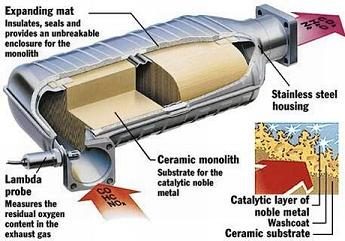 Technological developments follow, for the most part, a series of written codes that allow their interaction with other developments. That is the case with network protocols, for which there is the OSI standard.
Technological developments follow, for the most part, a series of written codes that allow their interaction with other developments. That is the case with network protocols, for which there is the OSI standard.
The OSI model (acronym for Open System Interconnection or open systems interconnection model) constitutes a model on how any network protocol structured in layers should work.
It has been developed by ISO (International Organization for Standardization), and consists of seven layers that specify how information must travel between the different nodes of a digital communications network.
This model, by itself, does not define a protocol, but rather a way in which it must be structured to allow components that follow the standards to interact with each other.
Its ultimate mission is to avoid gibberish in communications, especially between devices and protocols from different manufacturers. Each layer has its protocols, so let's examine each of these.
Of the seven layers, the lowest three work with the physical medium, while the last four do so for applications. The first is precisely the physical level.
The Physical Layer is responsible for the transmission of information at the bit level, making sure that each of the bits sent correctly reaches the other end of the communication channel, and taking care of the more mechanical aspects of communication.
It is in this layer that fundamental things are decided such as by how many volts a one or a zero will be represented, the duration of the signal for one or another value, and the establishment of the transmission.
The next layer is called "Link"
If the previous layer was responsible for ensuring that a sent bit is received with the same value on the other side, it does not provide the mechanisms to facilitate the detection and subsequent correction of errors, which is facilitated in this other layer.
Thus, this layer takes care of the preparation of the data packets, indicating how they are delimited and how much they measure, as well as the mechanisms for detecting, controlling and correcting errors.
These data packets created at the link layer have to be routed, and that's where the third layer, the network layer, comes into play.
In this layer there are various mechanisms that allow, among other things, to choose the optimal route to send the packets, bypassing, for example, congestion in the network, or repeating the sending of packets that have not reached the recipient.
It is in this layer that IP is used, an integral part of the popular TCP / IP suite, which has given rise to the Internet.
The transport layer makes an abstraction of the physical network, facilitating the exchange of communications between two specific machines.
It is in this where the communication between two different computers such as, for example, a client and a server that exchange information, is “cooked”. It acts as an intermediary between the network layer and the next layer, the session layer.
The session layer opens a logical communication channel between two machines.
Its name explains everything, since it allows a user to "open" a work session on another computer (or, eventually, any machine that supports these network protocols and offers a connected service) to, for example, download a file, or work remotely.
 If we see it with human logic, we would be talking about that a session corresponds, to roughly -and forgive the most “techies” for the freedom to use this comparison-, with a job that we must do remotely.
If we see it with human logic, we would be talking about that a session corresponds, to roughly -and forgive the most “techies” for the freedom to use this comparison-, with a job that we must do remotely.
The presentation level is another of the levels that, with its name, explains everything, since it is responsible for presenting the data correctly.
Despite the fact that today, all computer systems are highly standardized and highly compatible, in the past certain translation and adaptation tasks had to be carried out so that they could be represented from text files into other formats.
What the presentation layer does is make sure that, although the operating systems and the applications or versions of these at one end and the other, are different, the information can be viewed correctly and without “strange things”.
Finally, the application layer makes it easier for applications (computer programs or apps) to use the services of the other layers for their work.
It comes to be - again, saving the distances and with the permission of the purists - a kind of API, since it provides an interface for the programs to use the rest of the layers.
If normally, in the other layers of the OSI model a series of protocols are already marked, in the application layer these are totally free.
Thus, when we hear about a specific protocol for streaming music or video, P2P file exchange or any other, said protocol is part of this layer.
Photos: Fotolia - VWorks / Rob









